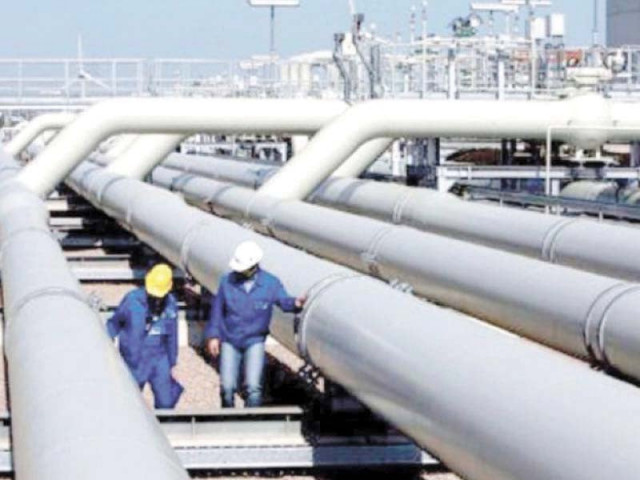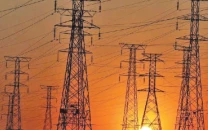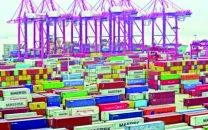E&P firms prefer third parties
Unwilling to allocate gas from new discovery to public utilities due to delay in payments

As public gas utilities have long been trapped in circular debt, the hydrocarbon exploration companies are reluctant to allocate gas to them and instead prefer third parties for better returns and timely payment of dues.
The situation emerged in a recent meeting of the Economic Coordination Committee (ECC) of the cabinet, where state-run exploration firm Pakistan Petroleum Limited (PPL) withdrew plans to allocate gas supply to Sui Southern Gas Company (SSGC) and sought permission to provide gas to fertiliser producer Fauji Fertiliser Bin Qasim Limited (FFBL).
The Council of Common Interests (CCI) has recently increased the share of gas allocation for exploration companies from 10% to 35%. As a result, the exploration firms are inclining towards third parties to avoid getting payments stuck in circular debt and receive their dues on time.
PPL had in November 2023 made a gas discovery at Jhim East X-1 in Shah Bandar Block, located in Thatta and Sujawal districts in Sindh. The concession block is a joint venture among PPL (63% share), Mari Petroleum Company Limited (32%), Sindh Energy Holding Company Limited (2.5%) and Government Holdings Private Limited (2.5%).
As per the gas production profile, the Jhim East X-1 discovery will be available for six to seven years with first gas supplies in February 2024 and plateau production up to 15 million cubic feet per day (mmcfd).
The ECC was informed that PPL had earlier requested for the allocation from Jhim East to SSGC. However, it later sent a revised request for providing gas to FFBL, which was connected to the SSGC network.
PPL was of the view that the allocation of Jhim East X-1 discovery to FFBL presented a more economically viable option, considering that the fertiliser producer was likely to make timely payments, thereby mitigating the circular debt issues afflicting PPL alongside other oil and gas exploration and production (E&P) companies.
The circular debt was growing due to delayed and non-payment of invoices by the nominated government buyers, ie, SSGC and Sui Northern Gas Pipelines Limited (SNGPL), it said.
The Petroleum Division further said that FFBL was currently receiving indigenous gas from SSGC on “as and when available” basis and its supply agreement would be valid until 2025.
Owing to the rapid depletion of gas resources in the country, the provision of required volumes of up to 55 mmcfd to FFBL posed a challenge to SSGC. At present, SSGC on an average was providing 30-40 mmcfd, lower than the initial allocation of 68 mmcfd.
Read Govt restructures gas priority for industrial growth
The limited supplies restricted FFBL’s urea production to 30-35% of capacity, although the output of di-ammonium phosphate (DAP) remained consistent.
Considering the SSGC’s inability to provide gas beyond 40 mmcfd and the involvement of cross-subsidy of Rs580 per million British thermal units (mmBtu) as against SSGC’s prescribed price of Rs1,351 per mmbtu, the additional gas allocation from PPL’s Jhim X-1 would enable FFBL to produce urea at optimum levels.
FFBL’s plant had DAP production capacity of 675,000 metric tons per annum and its urea capacity would increase by around 200,000 tons per annum provided SSGC continued to supply 30-40 mmcfd of gas.
The augmented urea output will avert the need for imports, prevent the drain on foreign currency reserves and mitigate subsidy implications for the government.
The Ministry of Industries and Production had repeatedly expressed concern over reduced gas supply to FFBL in the recent past and requested the Petroleum Division to take appropriate measures to ensure adequate supplies, which would result in uninterrupted urea production.
Aligning with the objective of maximising the utilisation of FFBL’s urea capacity and reducing reliance on imports, the Petroleum Division proposed in the ECC meeting that up to 15 mmcfd of gas from Jhim East X-1 may be allocated to FFBL at the wellhead price of $5.6 per mmBtu under the Petroleum Policy 2012.
The same, it added, could be changed biannually considering the crude oil price and dollar exchange rate.
It proposed that the allocated gas would be transported by SSGC through its system to FFBL under a mutually agreed transportation agreement.
FFBL would be required to pay a rolling fee to SSGC. FFBL would also seek capacity allocation from SSGC under the Natural Gas Third Party Access Rules 2018 and Network Code.
Subject to the availability of adequate gas volumes, SSGC would continue to supply up to 40 mmcfd in addition to 15 mmcfd from Jhim East X-1



















COMMENTS
Comments are moderated and generally will be posted if they are on-topic and not abusive.
For more information, please see our Comments FAQ